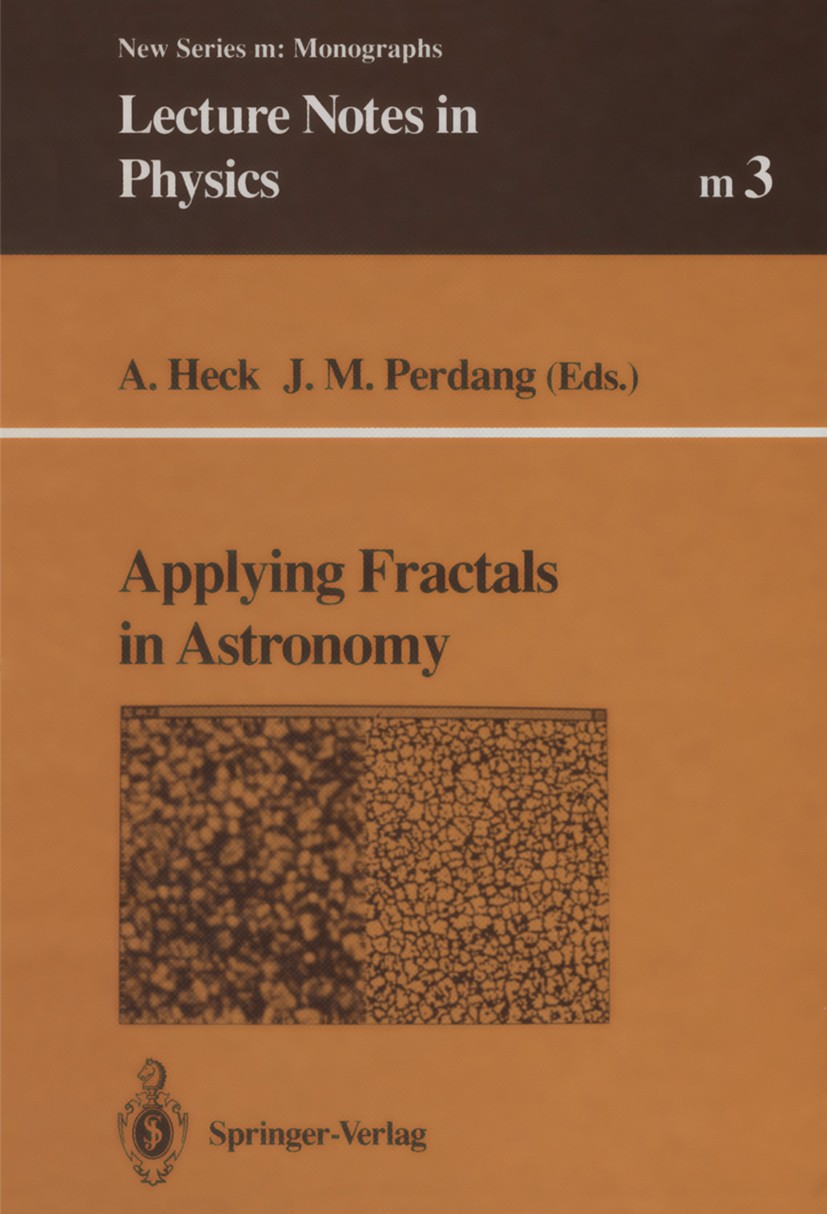| 期刊全稱 | Applying Fractals in Astronomy | | 影響因子2023 | André Heck,Jean M. Perdang | | 視頻video | http://file.papertrans.cn/161/160240/160240.mp4 | | 學科分類 | Lecture Notes in Physics Monographs | | 圖書封面 |  | | 影響因子 | ‘Fractal geometry addressesitselfto questions that many people have been asking themselves. It con- cerns an aspect of Nature that almost everybody had been conscious of, but could not address in a formal fashion. ‘ ‘Fractal geometry seems to be the proper language to describe the complezity of many very compli- cated shapes around us. ‘ (Mandelbrot, 1990a) ‘I believe that fractals respond to a profound un- easiness in man. ‘ (Mandelbrot, 1990b) The catchword fractal, ever since it was coined by Mandelbrot (1975) to refer to a class of abstract mathematical objects that were already known at the turn ofthe 19th century, has found an unprecedented resonance both inside and outside the scientific community. Fractal concepts, far more than the concepts of catastrophe theory introduced a few years earlier, are currently being applied not only in the physical sciences, but also in biology and medicine (Goldberger and West 1987). In the mid-eighties, Kadanoff (1986) asked the question: ‘Why all the fuss about /ractals‘! ‘. He offered a twofold answer: in the first place, it is ‘because of the practical, technological importance of fractal objects‘. Indeed he emphasised the relevance of t | | Pindex | Book 1991 |
The information of publication is updating

|
|
 |Archiver|手機版|小黑屋|
派博傳思國際
( 京公網安備110108008328)
GMT+8, 2025-10-31 18:48
|Archiver|手機版|小黑屋|
派博傳思國際
( 京公網安備110108008328)
GMT+8, 2025-10-31 18:48


